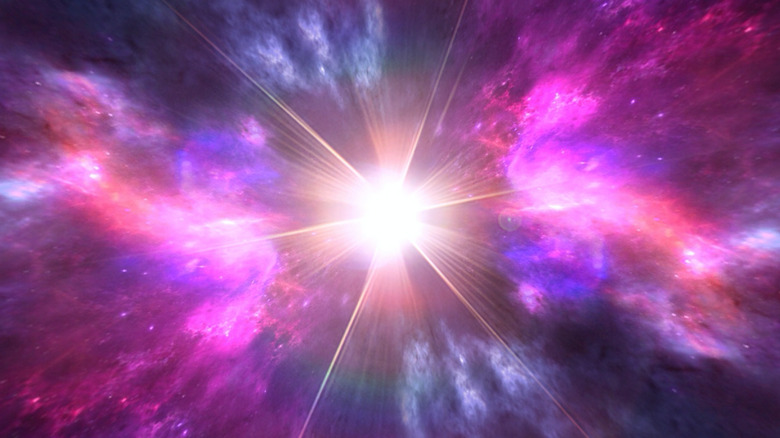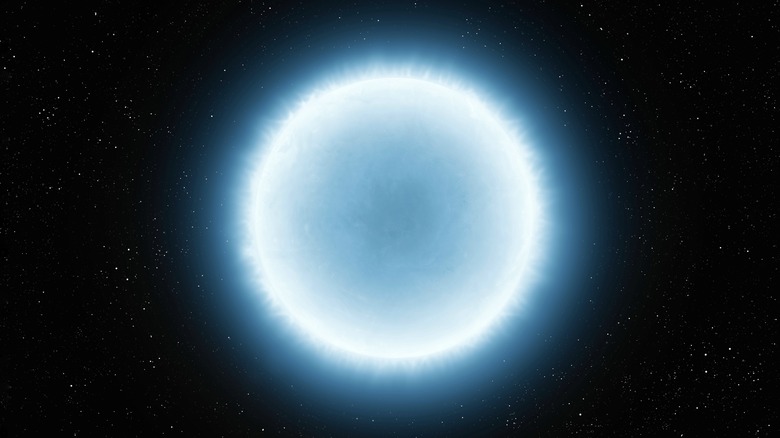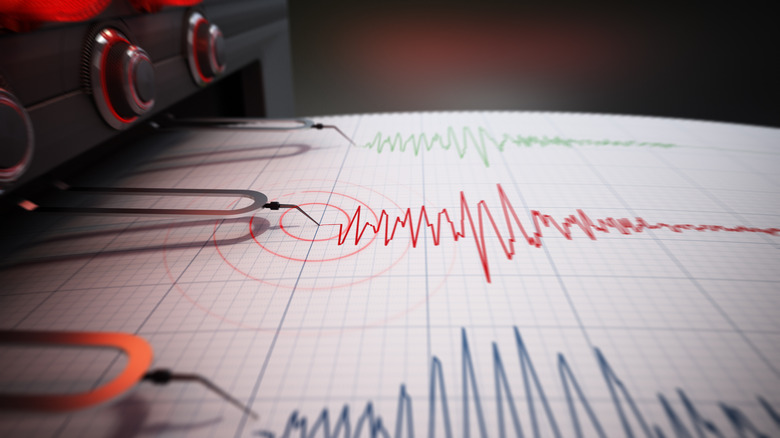Are 'Starquakes' Causing These Mysterious High-Energy Radio Bursts From Space?
Experts believe that eyes have evolved independently as many as 40 different times during the course of life here on Earth. It would be reasonable, then, to conclude that vision is beneficial to living beings. Seeing is believing, after all. But — bad news — you ain't seen nothin' yet. Truly.
Light is a wave (kind of, just go with it), and it can have a variety of wavelengths and frequencies, which are all mapped out on a big linear chart called the electromagnetic spectrum. And how much of that spectrum do you suppose humans can see? Certainly not all of it. Perhaps half? A quarter? Okay, maybe 10%, but surely not less than that. In truth, 99.9965% of the electromagnetic spectrum is completely invisible to humans. It really makes your 8K TV feel a tad less impressive.
One of the many incredible light shows we're unable to experience directly is known as a fast radio burst, or FRB. But even if you could see them, you'd miss them if you blinked: they only last between a few microseconds to a few milliseconds. So why are scientists interested in these invisible, superfast flashes?
Well, they're intense enough to be observed from 3 billion lightyears away, and they're hitting the Earth more than 10,000 times per day. Since the discovery of FRBs in 2007, their origin has been a mystery. But now scientists have new evidence that could explain where FRBs come from, and it would be putting it too lightly to call the theory earthshaking.
What are starquakes?
When an extremely massive star dies, it collapses in on itself until it creates an infinitely dense point called a singularity. The gravitational well around such an object is so powerful that not even light can escape, so we gave these terrifying spaceborne gravity monsters the cutesy name "black holes." These stellar corpses essentially rip a chasm right through the fabric of spacetime, so to call them the densest objects in space isn't quite fair — they're disqualified. If you're looking for the densest objects not shrouded in an acausal shell of darkness, you'll have to settle for the humble neutron star.
To make a neutron star, you need to take the mass of the Earth and crush it all into a sphere about 12 miles in diameter — and then inside that same sphere, find room to jam in another 499,999 Earths on top of the first one. It gets to be pretty tight quarters in there. As you might imagine, a neutron star is a very different type of celestial object than a more typical star like our own Sun. One such difference? A neutron star has a solid surface called a crust.
In that way, a neutron star has something in common with our humble planet. And while the mechanisms are different, the crust of a neutron star can be subject to sudden and violent shifting, not entirely unlike an earthquake. A starquake. Could they somehow be the source of FRBs?
Extragalactic aftershocks
Starquakes are thought to be one method neutron stars use to release energy. How much energy? One starquake observed in 2004 released more energy in a tenth of a second than our own Sun did during the entire time since Neanderthals went extinct by a factor of two-and-a-half. Energy bursts of this magnitude make a good suspect when trying to figure out who's been flinging FRBs across intergalactic distances.
Researchers from Japan recently published their research into the origins of FRBs. They wanted to examine two potential theories about the sources of these energetic bursts: solar flares and starquakes. Data was collected from three FRB sources and compared to data from both earthquakes and solar flares. Statistical analysis suggested that solar flares didn't fit the pattern of FRBs, but starquakes did.
In particular, the FRB data was consistent with the known parameters for aftershocks, including the number of aftershocks after an initial event and their duration. The researchers admit that more research is needed before FRBs can definitively be said to originate from starquakes, but it's compelling evidence and an important avenue of research. If only FRBs were the lone space energy mystery left to solve.


